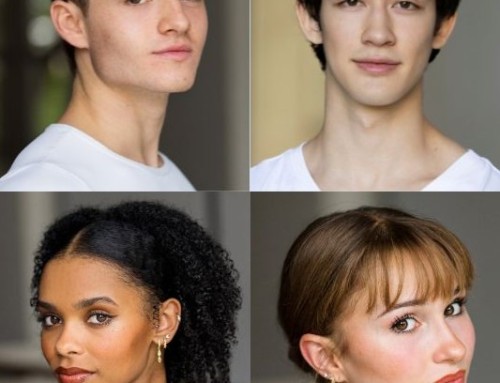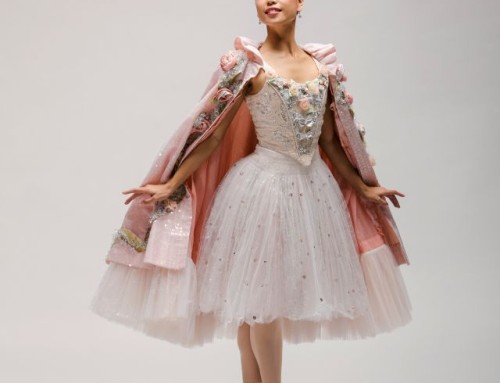Q&A: Giselle Designer Jérôme Kaplan
Peter Boal’s radiant staging of Giselle returns with all-new scenery and costumes by award-winning designer Jérôme Kaplan (above) who is best known to PNB audiences for his designs for Don Quixote, Roméo et Juliette.
Q: What steps were critical to your process in creating designs for sets and costumes for PNB’s Giselle?
A: I definitely think that the most critical steps are in the first minutes and hours of thinking about the general concept, of what you would expect to see on stage for a new Giselle. I always think like this, for me to design all the ballets in “Kaplan’s style” doesn’t mean anything. That’s why I can design some ballets in a very modern, nearly abstract way and others in a very historical way.

Q: When you start to think about Giselle, what part is the most beautiful and interesting visually?
A: Definitely, the “white” second act. Because, the first act is in “Prince Charming style,” and it’s very “ballet” in the stereotypical way. It made sense to set it in this time period, because during the 19th Century, the medieval look was quite in fashion. But now, it’s really out of fashion. That’s why I proposed to Peter Boal the idea to re-imagine the first act in “hunting foxes” style, with the beautiful equestrian dresses and gorgeous red hunting jackets, and he enjoyed immediately the idea. I didn’t change anything in the “Giselle” story, but re-set it in the real time in which it was choreographed, the late 19th century.

Q: Did you perform historical research? If so, how many hours did that involve and where did you do it? Are those resources easily accessible?
A: Yes, of course, for that kind of historical ballet, this is very important and creative to do some historical research. Even when it’s a period you already worked on, because historical sources always move and evolve. Also, because as a person and artist also I evolve and hopefully make progress. Those resources are accessible on the web, but also in books. It’s always better to try to find some different sources, not already used too much by other designers. Also, historical sources are crucial but need to be well “cooked” to create a special mood, a special world for each Ballet or Opera.

Q: I saw a sketch for the wili costume at PNB that said “Wings or no wings.” What was ultimately decided and why?
A: We will have wings! Giselle and wilis without wings is impossible! Because they are supernatural characters, similar to ghosts, and need something special, to make a clear difference from living people. I think we found something that works well: light, not fragile, not ridiculous, and danceable.

Q: Color swatches for the women’s costumes for the first act have rich, earthy, autumnal tones. How was that decision made?
A: In the story this is the time of the grape-gathering festival, also it was important for me to push the contrast between Act 1 and Act 2 visually, and that’s why I decided to have autumnal tones. In a way, when you re-design a historical ballet as Giselle you only need to read, open your ears, and be “serious” in the work. The ballet will be revealed to you as a photograph in the laboratory, slowly and magically.

Q: Any additional comments?
A: I would like to say, that people don’t realize how classical ballet is important and part of our cultural heritage, exactly like Noh and Kabuki for the Japanese. We need to keep it alive, and fight to transfer it to the younger generation. I only try to help to re-fresh it slightly, with all the respect you could have for a beautiful monument.
Original design sketches by Jérôme Kaplan; photos by Lindsay Thomas. Questions via Leslie Holleran; blog complied by Judith Austin.





